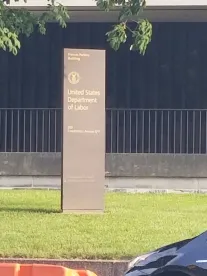Last Thursday, the U.S. Department of Labor (“DOL”) published in the Federal Register its newly-proposed rule regarding independent contractor vs. employee classification under the Fair Labor Standards Act (“FLSA” or the “Act”). Businesses have anticipated the release of this proposed rule from the Biden administration’s DOL since the DOL withdrew a more employer-friendly, Trump-era independent contractor rule in May 2021 that had not yet gone into effect.
The FLSA’s definitions establish the scope of the employment relationship under the Act and provide the basis for distinguishing between employees and independent contractors. The FLSA defines “employee” as “any individual employed by an employer,” and defines “employer” as including “any person acting directly or indirectly in the interest of an employer in relation to an employee.” 29 U.S.C. 203(e)(1); 29 U.S.C. 203(d). The FLSA’s definition of “employ” includes “to suffer or permit to work.” 29 U.S.C. 203(g). This “suffer or permit” concept has broad applicability and is critical to determining whether a worker is an employee and thus entitled to the Act’s protections.
In evaluating whether a worker is an employee or an independent contractor under the FLSA, the DOL’s new rule proposes using a multifactor “economic realities” test, which focuses on whether a worker is economically dependent on the employer or in business for themselves. In applying the economic realities test as proposed in the rule—which is largely a reversion back to the economic realities test previously used by the DOL—the DOL considers the following six factors:
-
the degree of control exercised by the hiring party over the manner in which the work is performed;
-
the relative investments of the hiring party and the worker in materials and equipment;
-
the degree to which the worker’s opportunity for profit and loss is determined by the hiring party or the worker’s own managerial skill;
-
the skill and initiative required in performing the job;
-
the permanency of the relationship; and
-
whether the service is an integral part of the hiring party’s business.
If a so-called “independent contractor” does not meet this test of economic reality, the contractor must be treated as an employee for FLSA purposes. The application of the economic realities factors is guided by the overarching principle that the FLSA should be liberally construed to provide broad coverage for workers. In undertaking this analysis, each factor is examined and analyzed in relation to one another, and no single factor is determinative. The factors should be considered in totality to determine whether a worker is economically dependent on the employer, and thus an employee. The factors should not be applied as a checklist, but rather the outcome must be determined by a qualitative rather than a quantitative analysis.
Under the FLSA, if an employer treats a worker as an independent contractor and that worker should have been classified as an employee, the employer is required to pay minimum wage and overtime if the employee is non-exempt. Misclassifications are often pursued by the DOL based on a complaint or audit, or, more commonly, are brought as both individual and collective action lawsuits through the federal court system. The penalty for failure to pay required overtime is backpay, plus an equal amount in liquidated damages, plus attorney’s fees and costs—not to mention a company’s own defense attorneys’ fees. For willful violations of the FLSA, a fine up to $10,000, imprisonment up to six months, or both, may be imposed. Even successful settlements of FLSA collective action lawsuits can run into the multi-millions. As the DOL, the IRS, the NLRB, and various other federal and state agencies have their own tests for determining independent contractor vs. employee status for various reasons, employers have a keen interest in staying apprised of the developments in this area of employment law, and should continue to consult with counsel to navigate this legal minefield. To quote Benjamin Franklin, this is certainly an area of employment law where “An ounce of prevention is worth a pound of cure.”





 />i
/>i

